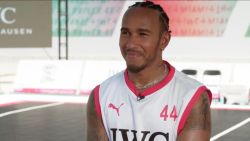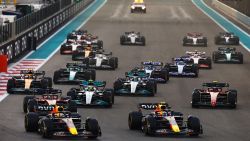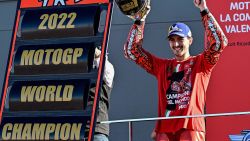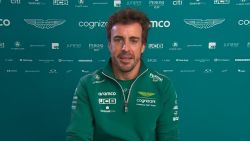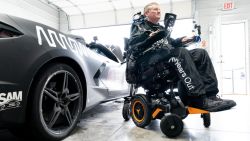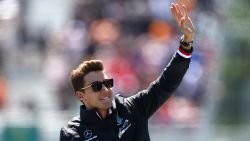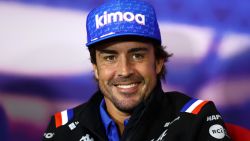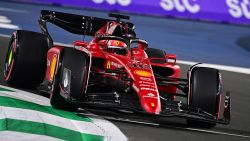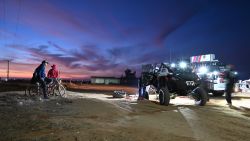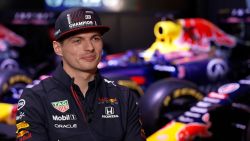When Sergio Perez takes to the track at this weekend’s Mexican Grand Prix, the eyes of the world won’t be on him but, should everything go to plan, a few places further forward on the grid.
Barring a disaster, Lewis Hamilton is all but guaranteed to win his fifth world championship and will rightly take the plaudits for another extraordinary season.
But all eyes in Mexico will most certainly be on Perez, even if he is only engaged in a fight for seventh place.
The Mexican driver will have to deal with the weight of expectation from a motorsport-mad nation and try to perform on a circuit steeped in racing history.
READ: Former teammate on how to beat Lewis Hamilton
READ: F1 drivers racing like they’re in rental cars
On Sunday, the Autódromo Hermanos Rodríguez in the country’s capital plays host to its fourth consecutive Mexican GP since the country returned to the Formula One calendar in 2015 after an 11-year absence.
The circuit is named in honor of two gifted brothers, both of whom left an indelible mark on the sport and their country.
The story of the 2018 F1 season so far
Pedro and Ricardo
Born into a wealthy family, Ricardo Rodriguez and his older brother, Pedro, soon made a name for themselves on the track as teenagers having risen through the ranks, thanks in part to their father’s financial backing.
It was the younger of the two, Ricardo, who initially shone, finishing second in the prestigious 24 Hours of Le Mans in 1960 as an 18-year-old to become the youngest driver to ever stand on the podium – a record that still stands today.
His standout performances convinced Ferrari to give him a slot as a Formula One driver in 1961, prompting the nation to host its first ever grand prix.
“(Mexican racing) was fairly quiet on the international scene until the early 1960s when a local governor was a petrolhead,” Formula One author Maurice Hamilton tells CNN Sport.
“That coincided with the rise of these two young brothers who were keen on racing and it was decided that a good thing would be to build a track near the center of Mexico City where they could exploit the local talents, especially the Rodriguez brothers.”
One year after Ricardo was signed by Ferrari, the new Magdalena-Mixhuca track hosted its first Formula One race weekend, a non-championship grand prix during the 1962 season.
However, the Italian manufacturer was enduring a torrid time and decided not to travel, leaving an entire nation disappointed.
But the young Mexican was signed at the last minute to race in his home country by the private Rob Walker Racing Team, the start of a sequence of events that would ultimately take his life.
Ricardo had just seen the brilliant British driver Jim Clark – who would go on to win the first of his two world championships a year later – take pole position in qualifying and, keen to earn the adulation of the crowd and his family who were present, tried to take pole for himself.
“Unfortunately, at the end of the lap, there was a 180 degree banked corner, very bumpy, very fast, called the Peraltada and the question was: Could you take it flat (out) or could you not?” Hamilton says.
“Even seasoned grand prix drivers said: ‘No, its too bumpy, you can’t do it.’ But Ricardo Rodriguez thought: ‘Yes I can’ and while he was doing that, the car left the road.
“He was flung from the cockpit and he died instantly, in front of his family and in front of all his adoring fans.”
Passing the torch
How crashes have shaped Formula One
Questions still remain around the younger Rodriguez brother’s death. Was he driving too fast? Did he experience a mechanical failure? Was he too inexperienced in the new Lotus he was driving?
What was for certain, however, was the impact the 20-year-old’s death had on Mexican motor racing.
The Magdalena-Mixhuca track was soon renamed the Autodromo Ricardo Rodriguez in his honor and the torch for motorsport in the country was passed to his elder brother, Pedro.
Initially thought to be not as quick or naturally gifted as Ricardo, Pedro developed into a talented driver and went on to forge a formidable F1 career over the next decade, winning two grands prix and earning seven podium finishes.
Such was his star power back home, an estimated 200,000 fans turned up to watch the 1970 Mexican GP amid chaotic scenes that would lead to the race being removed from the F1 calendar.
“They just broke through the fence and sat on the edge of the track,” Hamilton says. “Pedro Rodriguez and Jackie Stewart went round before the race and pleaded with them to get back.”
But so pleased were they to see the two superstars, the crowd surged even further forward.
“The drivers didn’t want to race obviously,” Hamilton explains. “The organizers said if you don’t there will be a riot, so you’ve got to race. So, reluctantly, the drivers raced.
“The crowd was sitting on the wrong side of the crash barriers – they were cross-legged on the grass. It was a recipe for disaster but fortunately nothing happened, despite the cars then doing 170mph.
“The only incident, actually, was when Jackie Stewart hit a stray dog that had suddenly sprung out from the crowd. That was the only thing that happened during a race which could have been far, far worse.”
Pedro went on to finish sixth, the final points position, but it would prove to be last race he ever competed in on home soil.
Just days before the 1971 British Grand Prix, Pedro went to take part in the Interserie race in Nuremburg, West Germany.
While racing for the lead, his car was shunted into a wall and burst into flames. He died soon after his body was pulled from the wreckage.
Pedro remains the last – and only – Mexican driver to win a F1 grand prix and the track in his home country was renamed the Autódromo Hermanos Rodríguez soon after his death.
‘It’s in the blood’
Perez, who has been a regular driver in Formula One since 2011, is only the third Mexican to take to the starting grid since Rodriguez’s last grand prix.
After Héctor Rebaque’s final race in 1981, Mexican fans had to wait more than three decades for one of their own, Esteban Gutiérrez, to compete in F1 again.
That lengthy absence of Mexicans on the grid means, despite driving for a team with little to no chance of making the podium, the pressure Perez is put under when racing on home soil remains intense.
“Perez will tell you that he does feel an enormous responsibility,” Hamilton says. “It’s sort of a double edged sword because it’s wonderful to have the following, it’s wonderful to have the support of so many people when you go to your home grand prix, but it also brings massive pressure because the nation expects him to win the race.
“He is a huge national hero because the Mexicans are still passionate about their racing. Once it’s in the blood, once the mothers and fathers and grandfathers are passionate about motor racing, it’s carried on down to the younger generation.
“You put Perez in for the return, for the third time Formula One has returned to Mexico City and that’s just boosted it even more.
“Of course he’s not got much chance of finishing on the podium but he’s got a great chance of being in the top 10 and certainly being in the mix and that’s all they need.”
On Sunday, “Checo” Perez will be determined to improve on last year’s seventh place, his best ever finish on home soil.
The dream is to finish the weekend on the podium at the Autódromo Hermanos Rodríguez, the track that, as a boy, he would stand behind the fence at and watch his own heroes tear around.


